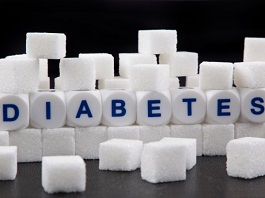It has come as a surprise to see a lot of people with vitamin d deficiency in a tropical country like the Philippines with almost a year-round sunshine. Vitamin D, also called the sunshine hormone, has effect on our bone, immune system, metabolism and even mood.
Studies say that the reduced pigmentation of light-skinned individuals results in higher vitamin D level. On the other hand, melanin, the skin pigment, which is present in greater quantity in dark-skinned individuals, act like a sun-block resulting to decreased conversion of vitamin D precursors in the skin. This is the reason why dark-skinned individuals may require extra vitamin D supplementation to avoid deficiency especially at higher latitudes.
In order for the body to maximize the effect of Vitamin D, optimum levels should be achieved. Studies show that we require supplementation of around 4,000 International Units (IU) of Vitamin D per day if sun exposure is avoided. On the other hand, if one plans to get Vitamin D from the natural metabolism of this vitamin in the skin through sun exposure, experts say that one needs approximately 20-30 minutes of exposure to strong sunlight on bare, non-sun screened skin to produce approximately 20,000 International Units (IU) of Vitamin D which the body needs for its daily minimum requirement. Darker skinned people need five to ten times longer exposure to synthesize the same amounts of Vitamin D that a fair skinned person would produce in 20-30 minutes. Because of this, dark-skinned folks are at greater risk of Vitamin D deficiency. However, because of the risk of skin cancer with sun-exposure, this has become an issue resulting to avoidance of sun exposure by more and more people and this increases the risk of acquiring vitamin D deficiency.
The Institute of Medicine (IOM) committee determined that the level of serum 25-hydroxyvitamin D (25[OH]D) that is needed for good bone health for most individuals was 50 nanomoles per liter or 20 ng/ml, however, several sources say that this cut off is too low. The Endocrine Society Clinical Practice Guideline released in July 2011 says that a level of equal to or less than 20 ng/ml is considered as Vitamin D Deficiency while a level of 21-29 ng/ml is considered as Vitamin D insufficiency 7.
Low levels of vitamin D have been linked to a lot of disorders. Vitamin D effect on bone metabolism is well established but its effect on insulin resistance and development of diabetes mellitus type 2 are among the newer associations.
Obesity has also been mentioned to have an effect on Vitamin D levels, and vice versa. According to Wortsman et al., obesity-associated vitamin D insufficiency is likely due to the decreased bioavailability of vitamin D3 from cutaneous and dietary sources because of its deposition in body fat compartments.
Studies on the effect of vitamin D levels and its relationship with insulin resistance or diabetes mellitus are conflicting. A recent study has shown that low serum 25-hydroxyvitamin D has been correlated with increased risk of developing Diabetes mellitus type 21. On the other hand, some studies report that there was no correlation in the levels of vitamin D with glucose tolerance.
The interest in Vitamin D deficiency and the benefits and risks of its treatment continues to grow. With the advent of newer discoveries in its uses and side effects, the benefits of treating vitamin D deficiency to address the diseases associated with it will hopefully be established soon. Long term studies are needed to establish the relationship of Vitamin D level with other diseases, including diabetes.
While the direct effect of Vitamin D deficiency in diabetes is being studied, establishing a correlation between the effect of treating Vitamin D deficiency to address insulin resistance and improve glycemic profile in patients who are prediabetic could help bridge the potential link. Moreover, diabetes is reported to have ballooned to 350 million since 1980 and now being regarded as a global epidemic. Vitamin D deficiency, on the other hand, has also been found to be very common nowadays. Hence, finding a positive correlation in treating vitamin D may give us an opportunity to help prevent this global epidemic to rise.
References:
1. Von hurst PR, et.al. (2010) Vitamin D supplementation reduces insulin resistance in South Asian women living in New Zealand who are insulin resistant and Vitamin D deficient – a randomized, placebo-controlled trial. British Journal of Nutrition 103, 549-555.
2. Scragg, R, et.al. Serim 25-hydroxyvitamin D3 levels decreased in impaired glucose tolerance and diabetes mellitus. Diabetes Res Clin Pract 1995;27:181-8
3. Pietschmann P, Schernthaner G, Woloszczuk W. Serum osteocalcin levels in diabetes mellitus: analysis of the type of diabetes and microvascular complications. Diabetologia 1988;31:892-5.
4. Isaia G, Giorgino R, Adami S. High prevalence of hypovitaminosis D in female type 2 diabetic population. Diabetes Care 2001;24:1496
5. Boucher BJ, Mannan N, Noonan K, Hales CN, Evans SJ. Glucose intolerance and impairment of insulin secretion in relation to vitamin D deficiency in east London Asians. Diabetologia 1995;38:1239-45
6. Tai, K, et.al. Glucose tolerance and Vitamin D: effects of treating Vitamin D deficiency. Nutrition 24, 950-956.
7. Holick, et al. Evaluation, Treatment, and Prevention of Vitamin D Deficiency: an Endocrine Society Clinical Practice Guideline. JCEM 2011; 1911-1930.
8. Wortsman, J, et al. Decreased bioavailability of Vitamin D in Obesity. American Journal of Clinical Nutrition, Vol. 72, No. 3, 690-693, September 2000.


 (3 votes, average: 4.67 out of 5)
(3 votes, average: 4.67 out of 5)









